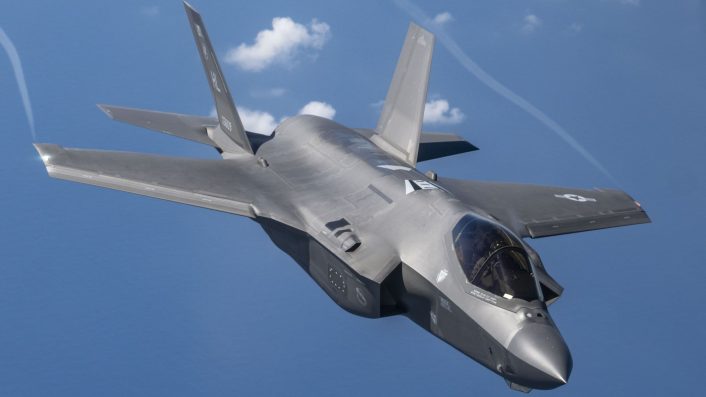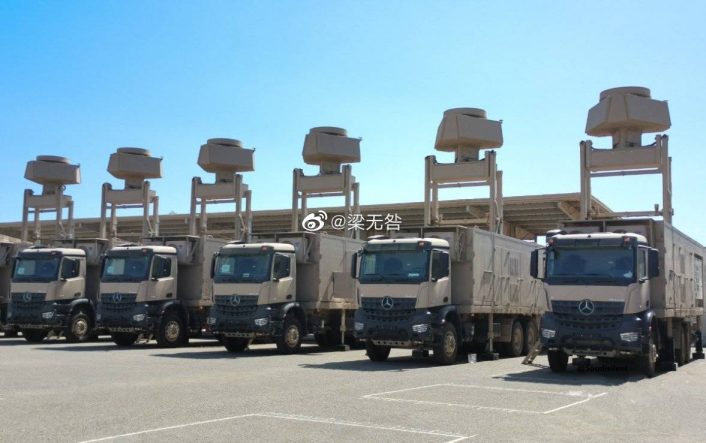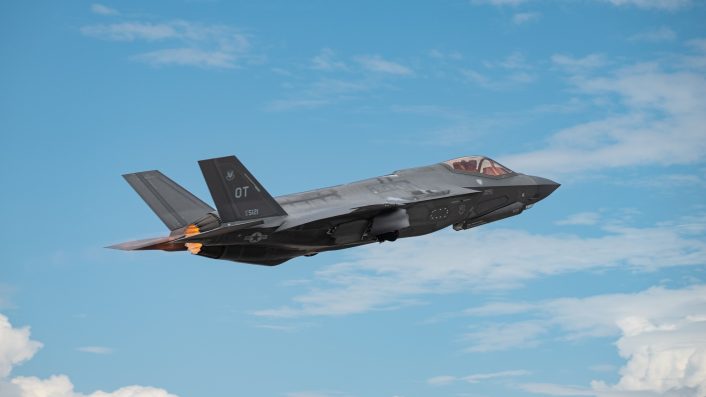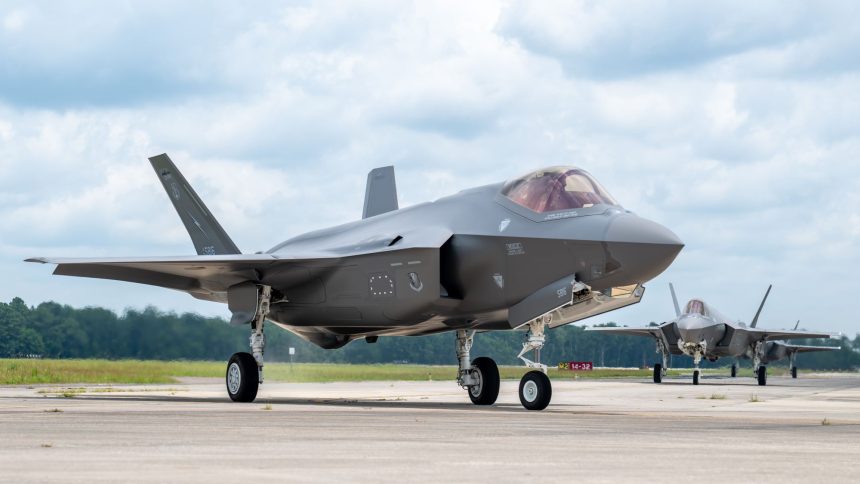Washington signals the will for a fast approval of a Saudi F-35 sale, reflecting a renewed effort for quicker weapons sales and the new U.S.-Saudi Strategic Defense Agreement.
The prospect of Saudi Arabia becoming the next Middle Eastern operator of the F-35 Lightning II appears to have accelerated sharply following a series of high-profile statements from U.S. President Donald Trump and the signing of a new U.S.–Saudi Strategic Defense Agreement. While the kingdom has pursued the stealth aircraft for years, so far the acquisition never became reality because of various reasons.
However, the latest developments are a clear indication that Washington has changed route and is now ready to authorize a sale that could reshape the Middle East’s balance of airpower. That is especially notable as relations between the two countries had some highs and lows in recent years.
Speaking in the Oval Office and later at a conference in Washington on Nov. 19, 2025, Trump said he expects the sale of F-35s to Saudi Arabia to proceed rapidly through the Foreign Military Sales (FMS) system. According to Air and Space Forces Magazine, Trump framed the approval as all but certain, telling Saudi officials that the process would move “very quickly” and predicting a turnaround of “about 24 hours,” despite the formal steps required under U.S. law.
“We will be doing that, we’ll be selling F-35s. They want to buy them, they’ve been a great ally.”
— President Donald Trump

Trump had first signaled his intent few days earlier, on Nov. 17, ahead of Crown Prince Mohammed bin Salman’s visit to Washington. The following day, the two leaders met at the White House to discuss defense cooperation, advanced technology, and broader investment commitments.
“I’m pleased to announce that we are taking our military cooperation to even greater heights by formally designating Saudi Arabia as a major non-NATO ally.”
— President Donald Trump
Strategic Defense Agreement
As reported by Breaking Defense, the U.S. and Saudi Arabia signed a Strategic Defense Agreement (SDA) on Nov. 18, which included U.S. authorization for both the F-35 sale and the purchase of nearly 300 M1 Abrams tanks. The White House called the SDA “a win for the America First agenda,” highlighting both industrial benefits for the U.S. defense sector and Saudi Arabia’s commitment to deeper security cooperation between the two countries.
“The U.S.-Saudi Strategic Defense Agreement is a historic agreement that strengthens our more than 80-year defense partnership and fortifies deterrence across the Middle East.”
— White House Statement
While the number of F-35s was not formally disclosed, multiple sources indicate that Saudi Arabia is seeking a fleet of up to 48 aircraft. Such a package could be valued between $5.3 and $5.7 billion, excluding munitions and logistics support, according to early estimates cited by Air and Space Forces Magazine.

Unmanned assets are also a big part of the agreement as, in addition to the F-35 and Abrams deals, Saudi Arabia is reportedly in discussions to acquire up to 130 MQ-9B drones and 200 Gambit loyal wingman systems from General Atomics Aeronautical Systems, according to comments given to Breaking Defense by company’s officials.
Israel’s Qualitative Military Edge
Despite the enthusiasm from both Washington and Riyadh, the proposed F-35 sale faces the hurdle of U.S. legal obligations to preserve Israel’s qualitative military edge (QME) in the region. In fact, Congress amended the Arms Export Control Act in 2008 to require that any Middle Eastern arms sale not erode Israel’s ability to maintain a technological and operational advantage.
Here is the definition provided by the Public Law 110-429:
“The term ‘qualitative military edge’ means the ability to counter and defeat any credible conventional military threat from any individual state or possible coalition of states or from non-state actors, while sustaining minimal damages and casualties, through the use of superior military means, possessed in sufficient quantity, including weapons, command, control, communication, intelligence, surveillance, and reconnaissance capabilities that in their technical characteristics are superior in capability to those of such other individual or possible coalition of states or non-state actors.”
Israel has historically opposed the export of the F-35 to Arab states. Israeli media reported that the Israeli Air Force has already raised concerns, producing a white paper warning that Saudi Arabia’s acquisition could “erode or significantly degrade” its QME. Israel similarly objected to F-35 sales to the UAE and to Turkey in the past.

Speaking alongside Mohammed bin Salman in the Oval Office, Trump dismissed concerns that the Saudi aircraft would be downgraded compared to Israeli F-35I Adirs. Addressing both sides, he said both countries should get “top of the line.”
“This is a great ally, and Israel’s a great ally, and I know they’d like you to get planes of reduced caliber. I don’t think that makes you too happy. We‘re looking at that exactly right now, but as far as I’m concerned, I think they are both at the level where they should get top of the line.”
— President Donald Trump
“I know they’d like you to get planes of reduced caliber. I don’t think that makes you too happy… As far as I’m concerned, I think they are both at the level where they should get top of the line.”
However, industry officials cited by Air and Space Forces Magazine noted that modifications to Saudi aircraft remain a possibility, including tailored mission-data arrangements or software differences. Israel enjoys unique access to the F-35 program, including authority to integrate domestic systems and weapons, with a level of customization unmatched by any other operator.
Security Concerns due to Chinese Systems
Another factor complicating the potential sale involves Saudi Arabia’s use of Chinese-made military systems. Both Air and Space Forces Magazine and Defense News highlighted long-standing U.S. concerns about the presence not only of foreign radars, but also of Chinese personnel in Saudi Arabia, which compromise sensitive technologies of the F-35.

Similar concerns led to Turkey’s being ejected from the F-35 program in 2019 due to its acquisition of the Russian S-400 air defense system. The acquisition triggered the Countering America’s Adversaries Through Sanctions Act (CAATSA), and the National Defense Authorization Act (NDAA) today still blocks the delivery of F-35s unless the S-400 issue is resolved.
Saudi Arabia currently operates Chinese radars and ballistic missile systems, and Air and Space Forces Magazine reports that Chinese technicians are present in the kingdom to support these assets. While the systems in question are primarily optimized for counter-UAS roles, Washington remains wary of any foreign radar with active electronically scanned array (AESA) capabilities near F-35 infrastructure.
Saudi Arabia’s Modernization
The Royal Saudi Air Force (RSAF) operates one of the region’s most modern and capable fighter inventories. According to World Air Forces 2025, as of December 2024, the inventory included 232 F-15s (of which 84 are the new F-15SAs), 72 Eurofighter Typhoons and 81 Tornado IDS jets, about to be phased out.
The Tornado’s replacement has long shaped Riyadh’s procurement plans. Saudi negotiated for 48 additional Typhoons, although the deal was repeatedly blocked by Germany until 2024. The country also had talks with France for Dassault Rafales, while Boeing has offered the F-15EX Eagle II.

Should Riyadh acquire the F-35, Israel would no longer have the monopoly on low-observable combat aircraft in the region, as it has since 2016. As the same time, the F-35 would represent a leap in capabilities, especially when countering Iran and its proxies.
Speeding Up the FMS Pipeline vs Politics
A recurring theme in Trump’s remarks, also echoed by Defense Secretary Pete Hegseth, is the push to drastically accelerate the FMS process. As reported by Air and Space Forces Magazine, Hegseth recently unveiled reforms that shift arms sale approvals from the Pentagon’s policy staff to its acquisition directorates, with the explicit aim of “speeding weapons sales to foreign governments.”
The timeline for a possible delivery of F-35s to Saudi Arabia is yet unclear. However, with the U.S. Air Force slowing down its own F-35 procurement rates, Saudi Arabia and other customers could receive jets faster.
However, while the FMS process might speed up, the political approval might be slower. In the past, Washington refused to export the F-35 to Arab nations due to the combination of QME requirements, concerns over technology security, and the political sensitivities surrounding diplomatic relations.

Because of this, Congress is likely to thoroughly scrutinize the transaction, especially given previous objections tied to human rights issues and Saudi Arabia’s military actions in Yemen. In fact, The War Zone noted that lawmakers had previously moved to block arms transfers to Riyadh following the Khashoggi killing and rising civilian casualty concerns.
At the same time, the SDA and expanding defense cooperation appear to point to a more strategic realignment. Thus, with the political momentum at the highest level of the U.S. administration, the Saudi push for the F-35 might finally go through with shorter delays.









